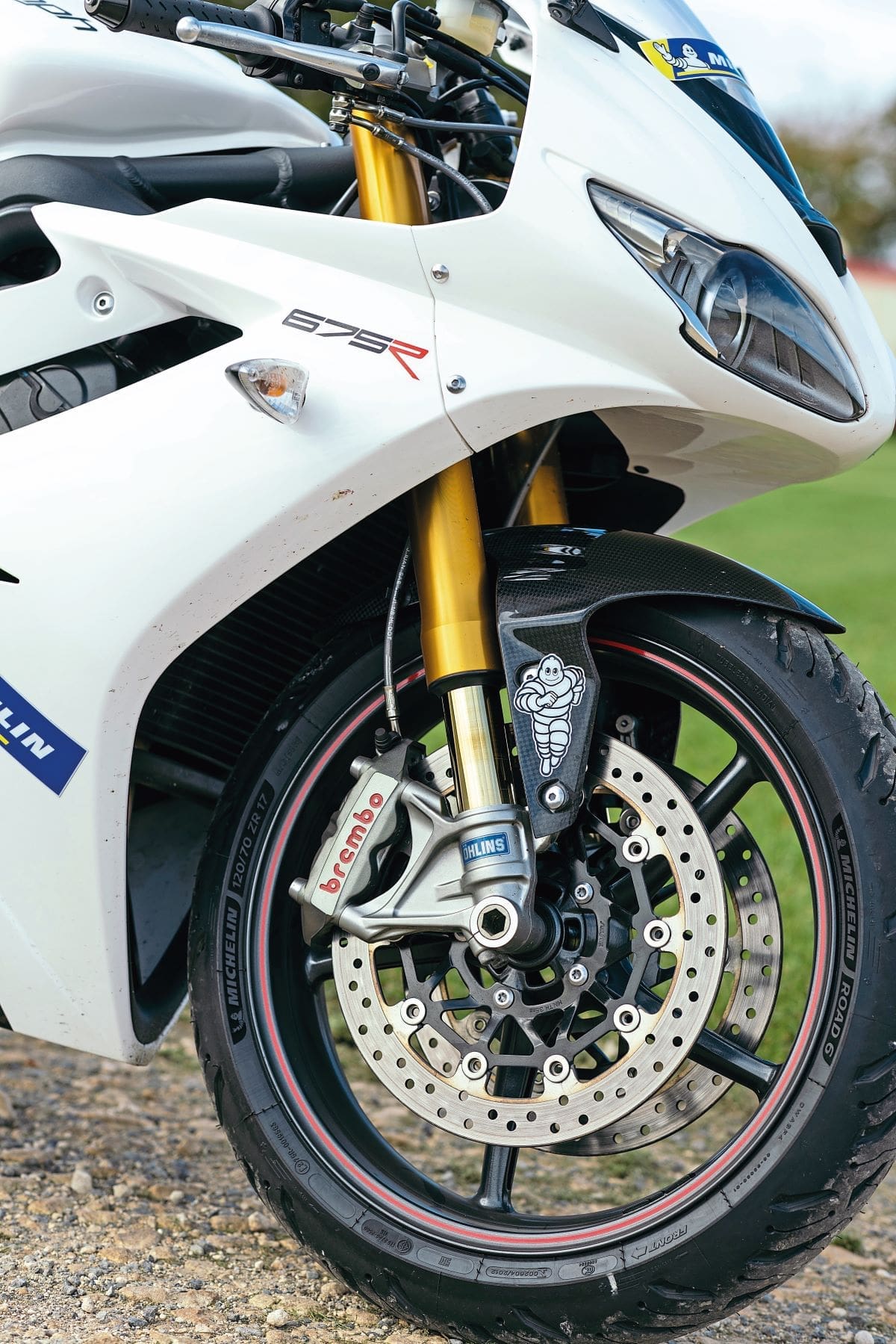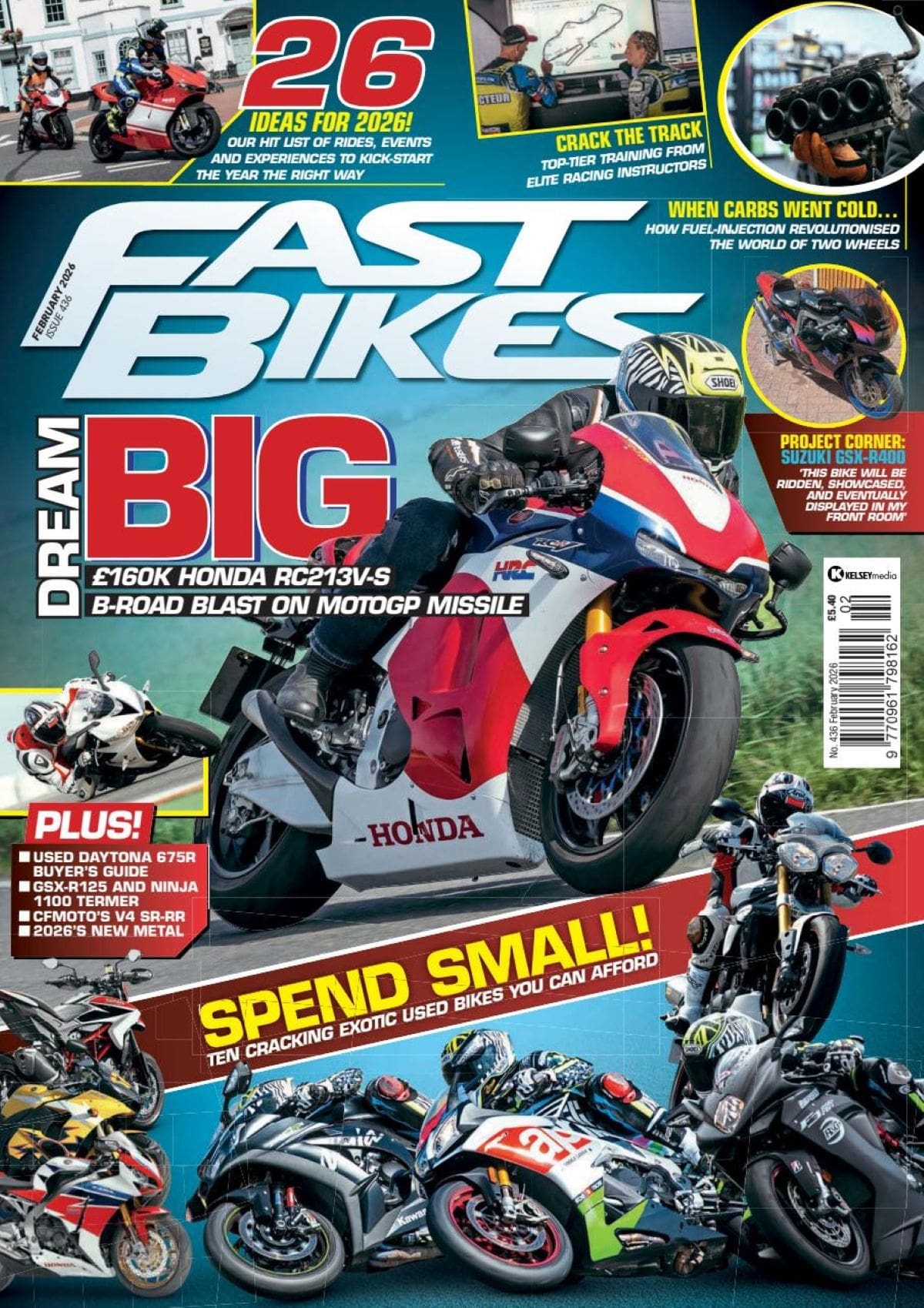
Words: Bruce ‘Dangerous’ Wilson Photos: Gary Chapman
It’s hard not to get hung up by the hype of new metal, such as the R9 and Ducati V2, but if your bank balance is anything like mine, it pays to get a little nostalgic every now and again, and remember all the awesome, pre-loved and massively more affordable supersport options kicking around. Having grown up in an era brimmed to the rafters with 600cc sensations, the likes of Kawasaki’s ZX-6R, Honda’s CBR600, Yamaha’s R6 and Suzuki’s GSX-R600 need no introduction. And then there are the triples, such as MV’s F3 675, and perhaps my favourite of them all, Triumph’s Daytona 675. It’s fair to say that without these high-revving headbangers, the world would be a much duller place, and while they might not sport a 25-plate registration or a 5in TFT dash, the goods on offer at a fraction of the price can make them more tempting than that ninth pint seven hours into a day sesh that’s got out of hand.
The best news of all is that regardless of your budget, you’re likely to find something. I say this with experience having recently bought an SRAD GSX-R600 for just £600 – the fact it’s in pieces and doesn’t run means nothing – while a grand or two on Marketplace is likely to dig up some pleasantly surprising garage filling material. Of course, if you want more you’ve got to pay more, but nowhere near as much as what you would for a new bike. With £4-£5000 in your back pocket, there’s the scope to scoop up some seriously capable supersport steeds, such as these three class acts…
The all-rounder: Honda CBR600RR (2007-2012)
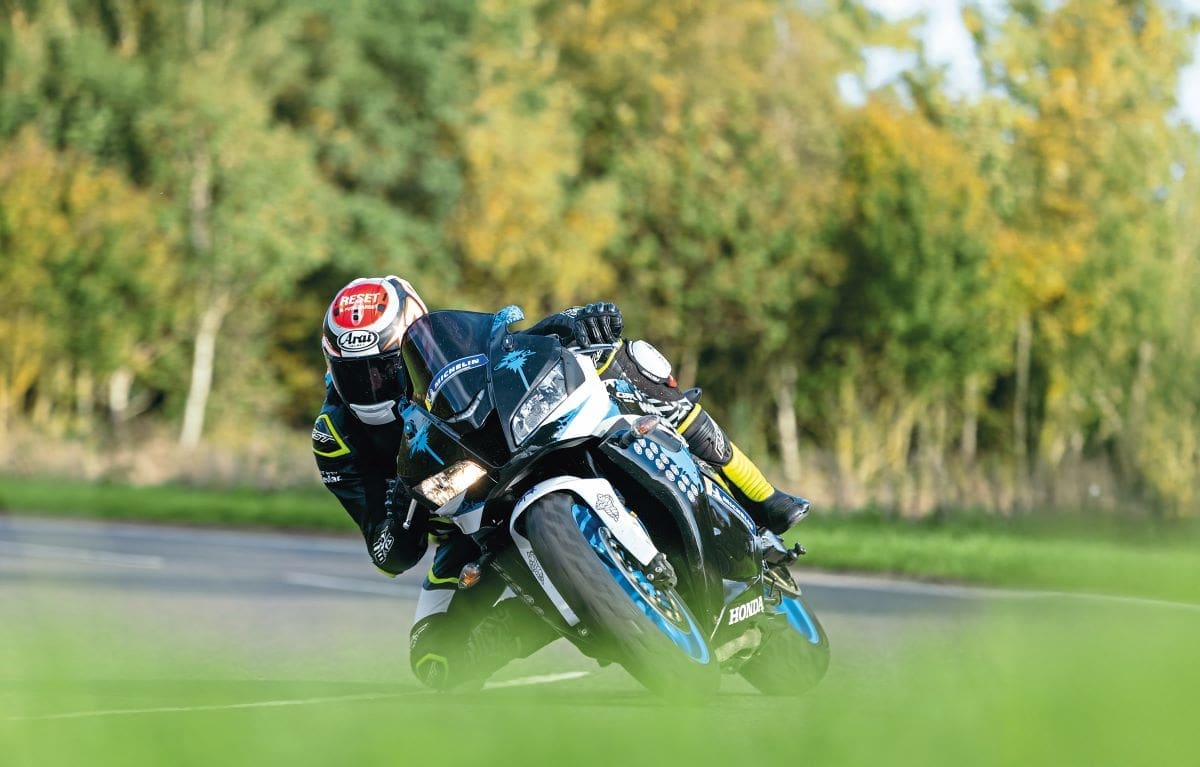
I’m kicking things off with the CBR600RR quite simply because it’s probably the most rounded of all used supersport bikes. If you’ve owned one, you’ll know just how cracking a road bike this is, backed up by a relatively torquey motor that makes day-to-day riding easy-going. This bike right here is a second-generation model, which could be said was probably the best balanced 600 of its time. This generation ran until 2012 with only minor updates, before Honda quietly backed out of the middleweight arms race – before getting back into again last year with the heavily revised RR, which is a great option to be looked at, assuming you’ve got £10k kicking around. If you haven’t, here are a few things to note about this much cheaper option…
Enjoy everything More Bikes by reading the MoreBikes monthly newspaper. Click here to subscribe, or Read FREE Online.
Handling: If you ever ride one of these and it doesn’t feel agile, stable, and excelling in front-end feel, get off it and check the suspension. Honestly, the best thing about this bike is the way it handles, pitching into corners with ease, and feeling planted to the ground. The second-generation RR had a slightly shorter wheelbase than its predecessor, and the benefit of that is a bike that is more obliging than a Labrador, getting in and out of corners with little to no drama. It’s an easy machine to muscle around and the riding position only aids your ability to move all over the bike – should you be the kind of rider who can’t sit still, that is. Genuinely one of the best-handling options out there… just in case you haven’t already got the message.
Ergonomics: If you’ve never sat on one of these before, you’re in for a surprise. Unlike many of its rivals, the RR swallows you into place, locked between the tall tank and tail unit. The bars only add to this sensation of generous proportions as they sit just above the yoke, albeit at a pretty acute angle… and they’re locked into place by tabs. So, unless you’re handy with a hacksaw, you will have to adapt to their narrow-angled disposition. Still, it’s not the end of the world – the bike as a whole feels pretty chilled and more suited than most to going the distance. Another bonus is the large and comfy rider seat.
Motor: If you’re hoping for fireworks, the RR might prove a little disappointing. While the engine isn’t exactly lacking in oomph, low down it can feel frustrating, but the midrange is decent, which is what matters most on the roads. On track, you’d maybe get closer to troubling the peak power output that kicks in at more than 13,000 revs, but otherwise you just have to accept this thing for what it is. As standard, it didn’t come with a shifter or blipper, and the same goes for the lack of a slipper clutch, which means that when you’re cracking on, it doesn’t take much to get the rear end wagging in protest.
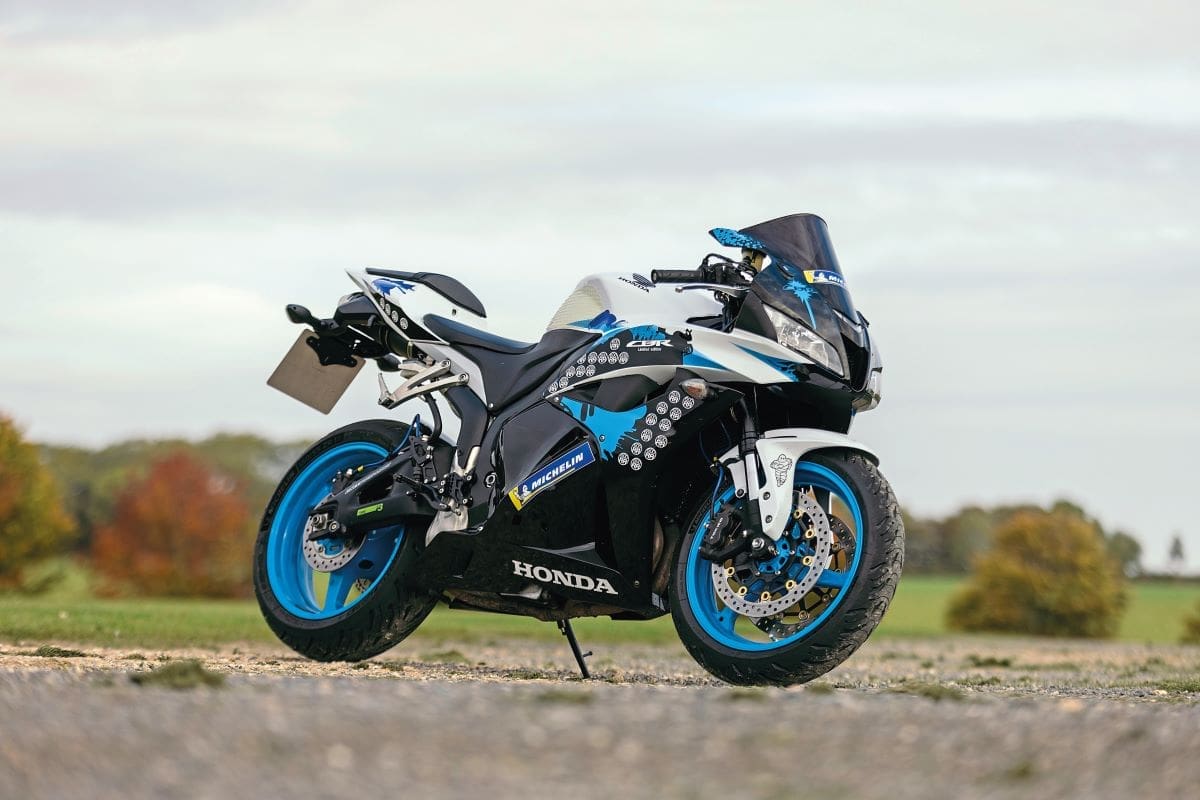
Spec
Engine:
Type: 599cc, liquid-cooled, 16v, inline-four
Bore x stroke: 67mm x 42.5mm
Compression: 12.2:1
Fuelling: Electronic fuel injection
Tested power: 108bhp @ 13,400rpm
Tested torque: 62Nm @ 11,000rpm
Chassis:
Frame: Aluminium twin spar
F suspension: 41mm inverted forks, fully adjustable
R suspension: Monoshock, fully adjustable
Front brakes: Four-piston calipers, 310mm discs
Rear brake: Single-piston caliper, 220mm disc
Dimensions:
Wheelbase: 1375mm
Seat height: 820mm
Dry weight: 156kg
Fuel capacity: 18 litres
Info:
Price: (used): £3000-£7000
From: Online sales
The racy rival: Yamaha YZF-R6 (2008-2016)
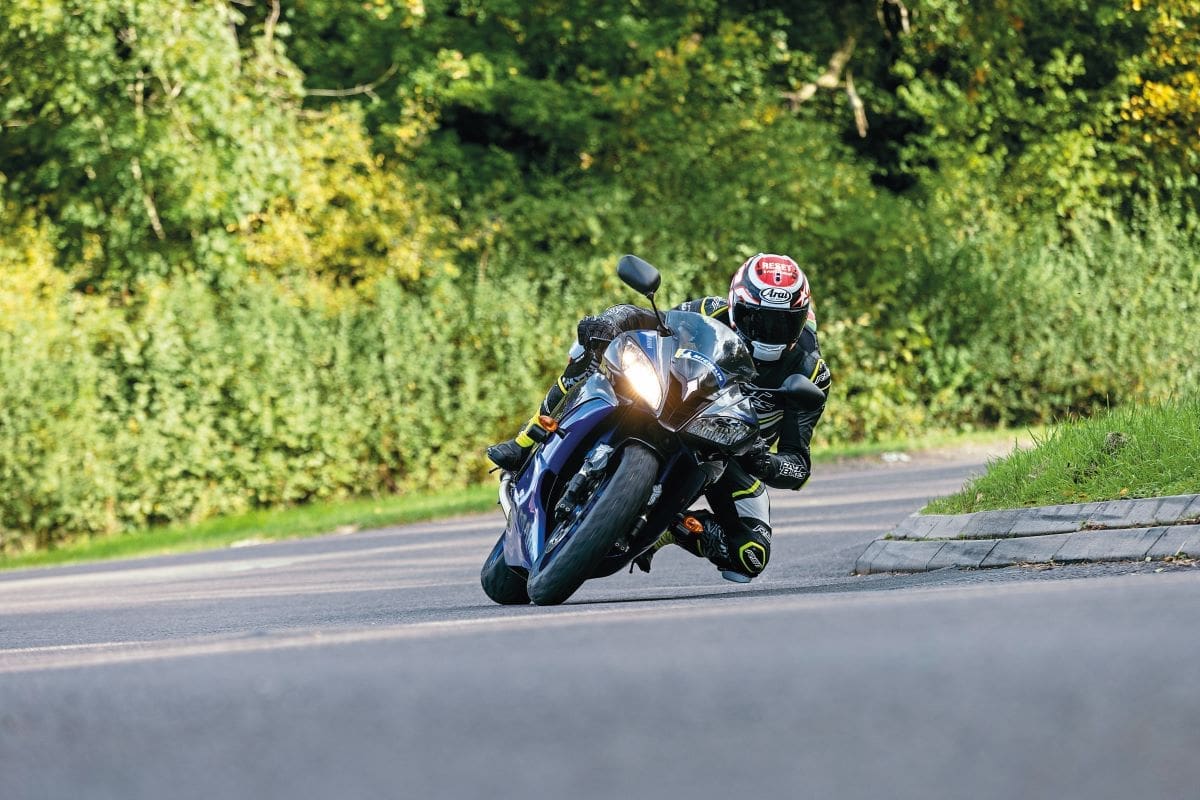
Unless you’ve been living under a rock, the R6 should need zero introduction. It has been around since 1999, with loads of different iterations along the way. Perhaps the best of them all is this one here, the 13S model. Picking up on the firm foundations of the 2C0 – also a cracking bike – the 13S gained a bit more oomph, thanks largely to variable inlet trumpets, and it sharpened up the package’s act from an aesthetic and handling point of view.
On track it seemed to rule the roost, and on the roads it brought a level of excitement that few of its rival could match. In fact, despite 2017’s deliverance of a newer, smarter and greener R6, I remember the general feel of deflation about that last production version because it couldn’t match the model that’d come before in specs – Euro4 put paid to that.
The point being, still to this day, the 13S is a cracking used option that’s now on the cards for a fraction of the cost of more modern options. Here’s what you need to know about it…
Handling: The best thing about this bike is the way it handles. Without a doubt, it is the sharpest-handling option on the market, and it’s arguably like that because the geometry is so aggressive. The front-end feel of the Yamaha is exceptional, giving you the sensation that it’s always planted and obliging, no matter how hard you push it or how quickly you ask it to change directions. This is a very agile and easy-to-turn machine, which also feels stable on its side. Of course, suspension set-up will dictate whether you’re getting the best out of the package, but having raced several of these, I know that when you have them dialled in, they’re untouchable in a bend, be it on the roads or on track. A truly delightful bike to throw around.
Ergonomics: Are you a regular at yoga? If not, you might want to be, should you buy one of these. The R6 doesn’t do compromise. It’s not there to give you a hug or reassure you that you’ll be alright until the next fuel stop – it’s an absolute brute on the wrists, the back, and just about every other part of your body. The riding position sits you in such a way that your wrists take a lot of force, and you seem to push up into the tank, as even the seat is angled. And then there’s the high located pegs that deserve a good mention. Of course, when you’re flat-out, that’s the perfect riding position for attacking corners, but for everything else you’ll maybe spend most of your time attacking painkillers. As for the screen… it’s got one, but if you can get below it, you’re doing well.
Motor: You only need to know one thing about the 13S’s motor – if you’re not screaming its nuts off, it’s not happy. In all honesty, the engine can seem like hard work if you’re tootling, so don’t say you’ve not been warned. Low and slow do not bode well with the Yamaha, which only starts to come to life above 8000rpm, the best of its bite kicking in once you’re above double figures. North of 10k, this bike not only lifts its game, but it also delivers a soundtrack that’ll encourage you to keep it near to the rev limiter. Be mindful that many used options will come fitted with aftermarket cans, which might also be a cause for flat spots in delivery or spiky throttle pick-ups, so if you buy one with a can, get it on a dyno for a health check. For road use, maybe a change of gearing would also help make the motor more accessible.
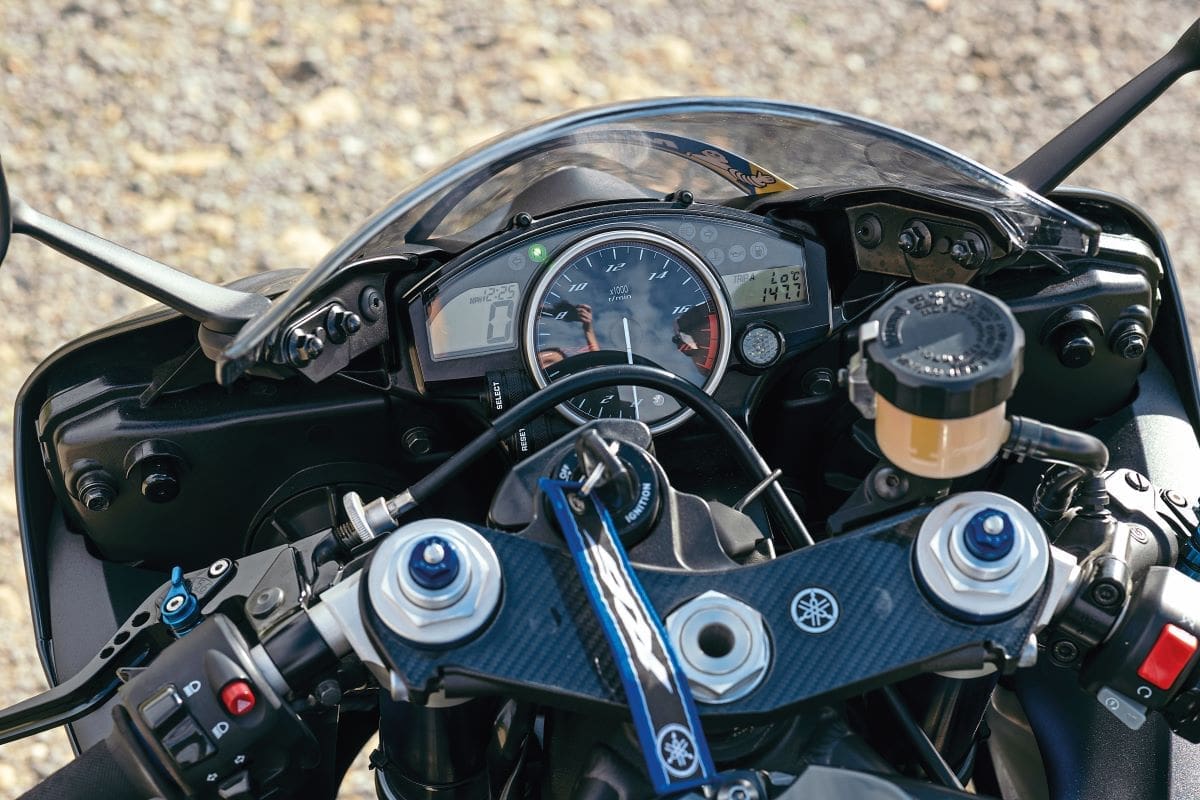
Spec
Engine
Type: Liquid-cooled, 16v, DOHC, inline four-cylinder
Bore x stoke: 67 x 42.5mm
Compression: 13.1:1
Fuelling: EFI
Claimed power: 127bhp @ 14,500rpm
Tested torque: 65Nm @ 11000rpm
Chassis
Frame: Aluminium Deltabox
F suspension: KYB 41mm, fully adjustable
R suspension: KYB monoshock, fully adjustable
Front brake: Twin 310mm floating discs, four-piston radial mono-block calipers
Rear brake: Single 220mm disc, single-piston caliper
Dimensions
Wheelbase: 1375mm
Seat height: 850mm
Wet weight: 186kg
Fuel capacity: 17.5 litres
Info
Price: (used) £3000-£8000
From: Online sales
The best of British: Triumph Daytona 675R (2011-2012)
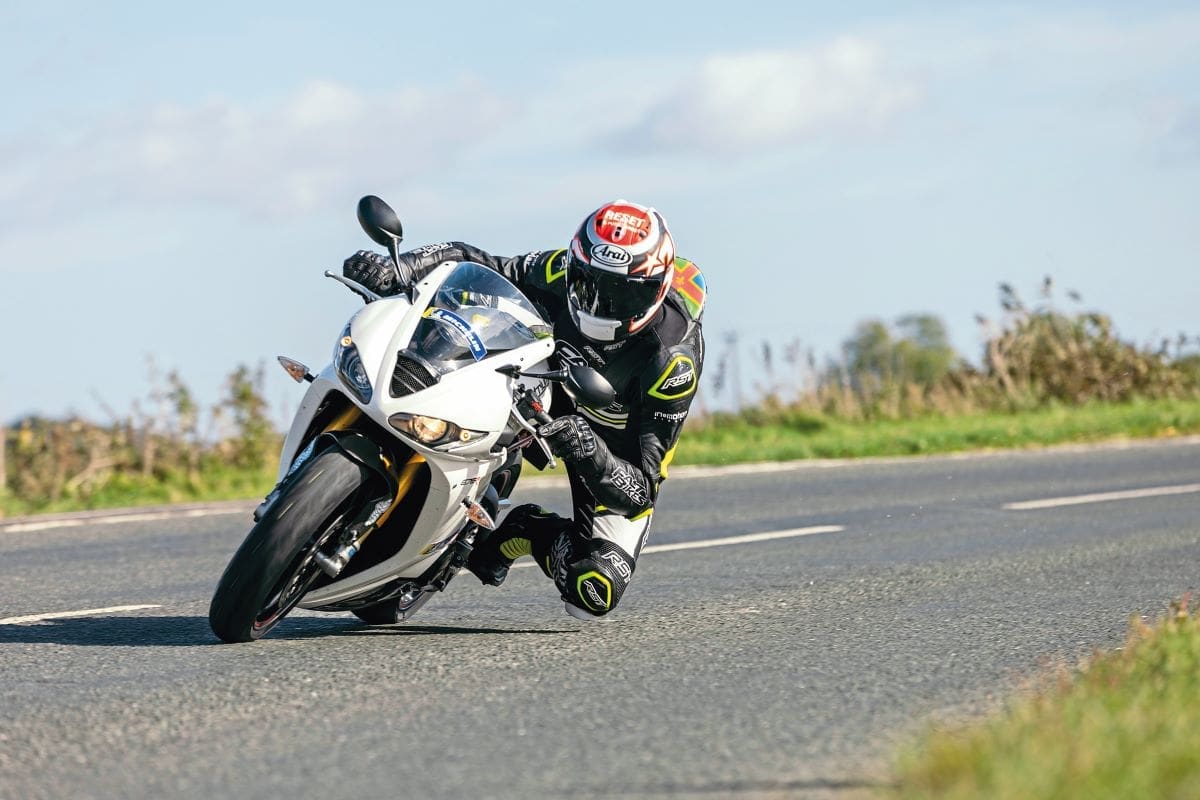
When Triumph released the Daytona 675 in 2006, it didn’t just shake up the supersport class, it redefined it. While the big four Japanese brands were locked into inline-four 600s, Triumph went rogue with a 675cc three-cylinder that offered a torquier, more road-friendly alternative without sacrificing track prowess.
By the time the first-generation 675R rolled out in 2011, Triumph had refined the Daytona into something truly special. This wasn’t just a slightly sharper version of the standard model, it was the ultimate first-gen Daytona, boasting Öhlins suspension, Brembo brakes, and a sprinkling of carbon fibre.
Today, the 675R remains one of the most desirable middleweight sportsbikes on the used market, and it’s also one of my favourite all-time bikes to ride, packed with character, punch, and a unique look that sets it apart every bit as much as its soundtrack.
Handling: While the stiffness of the Triumph would have you believe it’s only suited to the race track, the truth is the 675R is an absolute beaut of a bike to throw about on the roads. True, it’s very stiff, but not to the extent that your fillings fall out. And never forget that the Öhlins is fully adjustable, so back things off if it’s not to your liking. But don’t take things too far or you’ll compromise the brilliance of the package. In stock trim, this thing eats up corners with ease, turning in nicely and feeling fantastic at full lean. It’s a very stable bike, and talkative too, while the lightness of the Triumph is hard to ignore when going through endless twisties. A very easy and forgiving bike to put through its paces.
Ergonomics: The riding position on the Triumph is probably a halfway house between the CBR and R6; it still feels like the bike’s poised on its nose and it undoubtedly gives your wrists a good workout, but not in the same way as the Yamaha. The bars are also that bit wider and more user-friendly on this thing, though the seat loses points for feeling so thin and unforgiving. The bike’s actually pretty gangly, so leg-room feels relatively generous for this kind of bike, while the screen is narrow but tall.
Motor: There’s much to like about the Daytona, but the biggest hook has to be the engine. The triple is so versatile and is as at home on the track as it is on the street. No other inline-four can mirror the Trumpet’s toque or delivery from down low, which only seems to build with revs. You’ll find yourself at the limiter much sooner than you perhaps expected, but even that sounds awesome on this thing. I’ve never ridden one of these and not come away admiring how smooth the throttle pick-up is or how predictable and useable the spread of power has proven. In fact, the worst thing is how effortlessly it gets up to speed, which could get you in bother if you’re not keeping a keen eye on the speedo.
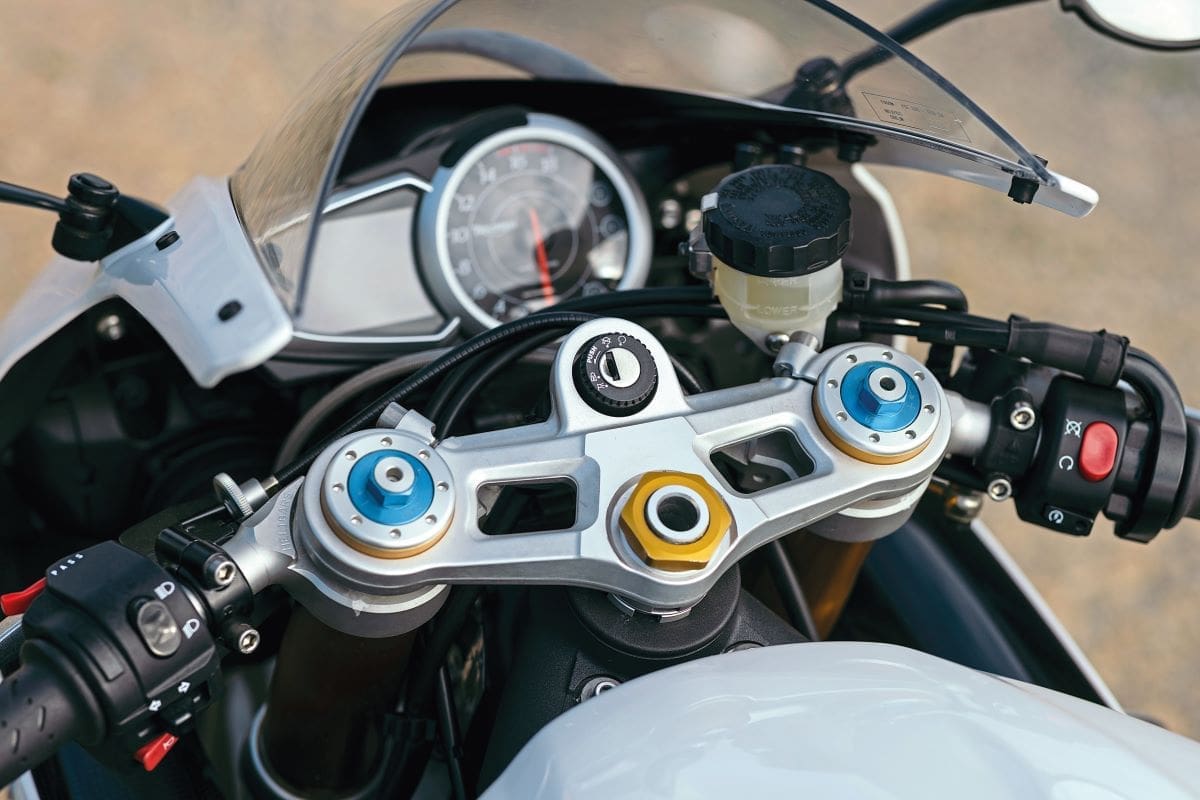
Spec
Engine
Type: Liquid-cooled, 12v, DOHC, inline three-cylinder
Bore x stoke: 74 x 52.3mm
Compression: 12.7:1
Fuelling: Multi-point sequential electronic fuel injection with forced air induction and SAI
Tested power: 123bhp @ 12600rpm
Tested torque: 72Nm @ 11700rpm
Chassis
Frame: Aluminium beam twin spar
F suspension: Öhlins 43mm upside down NIX30 forks, fully adjustable
R suspension: Öhlins TTX36 twin tube monoshock, fully adjustable
Front brake: Twin 308mm floating discs, Brembo four-piston radial monoblock calipers
Rear brake: Single 220mm disc, Nissin single-piston caliper
Dimensions
Wheelbase: 1395mm
Seat height: 830mm
Wet weight: 185kg
Fuel capacity: 17.4 litres
Info
Price: (used) £4500-£8000
From: Online sales
